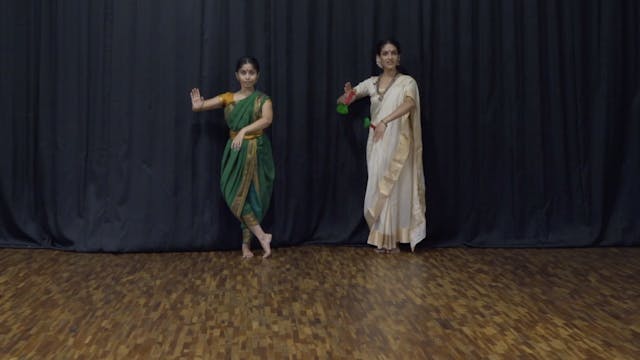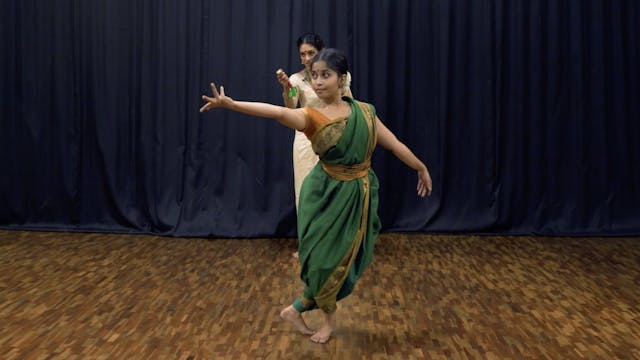Grīvabheda Abhinayadarpanam
Playlist 49
•
18s
The Grīvabhedas, as described in the Abhinaya Darpana are 4 in number.
These Grīvabhedas, or gestures of the neck are used primarily communicate meaning gesturally, and also used for specificity in Nritta.
Please refer to the Shloka below for pronunciation. Please note that the separate movements of the head when put together in a Shloka form 'Sandhis', or compound words in the Sanskrit language. Words like 'ca', 'thatha', mean "and", "also". The separate words for each movement are also given below the shloka.
Sundarī ća Tiraścīnā tathaiva Parivartitā
Prakampitā ća Bhavagne neiryagrīva ćaturvidha
Sundarī
Tiraścīnā
Parivartitā
Prakampitā
Up Next in Playlist 49
-
Drishtibheda Abhinyadarpana
The Drishtibhedas, as described in the Abhinaya Darpana are 8 in number.
These Drishtibhedas, or gestures of the eyes are used primarily communicate meaning gesturally, and also used for specificity in Nritta.Please refer to the Shloka below for pronunciation. Please note that the separate move...
-
Varnam, "Adi Shivane" : Part 8
Raga: Todi
Adi Tala
Composer: K.N.Dandayudapani Pillai.
Choreography: Guru Narmada (Jathis) , Adapted by Rukmini Vijayakumar
Language: TamilThe Varnam speaks from the perspective of a Nayika that is longing to see Lord Shiva.
This video goes through the last line of the pallavi of the Varnam s...
-
Varnam, "Adi Shivane" : Part 9
Raga: Todi
Adi Tala
Composer: K.N.Dandayudapani Pillai.
Choreography: Guru Narmada (Jathis) , Adapted by Rukmini Vijayakumar
Language: TamilThe Varnam speaks from the perspective of a Nayika that is longing to see Lord Shiva.
This video goes through the chitteswaram.
P: Adi shivanaik-kANavE A...


